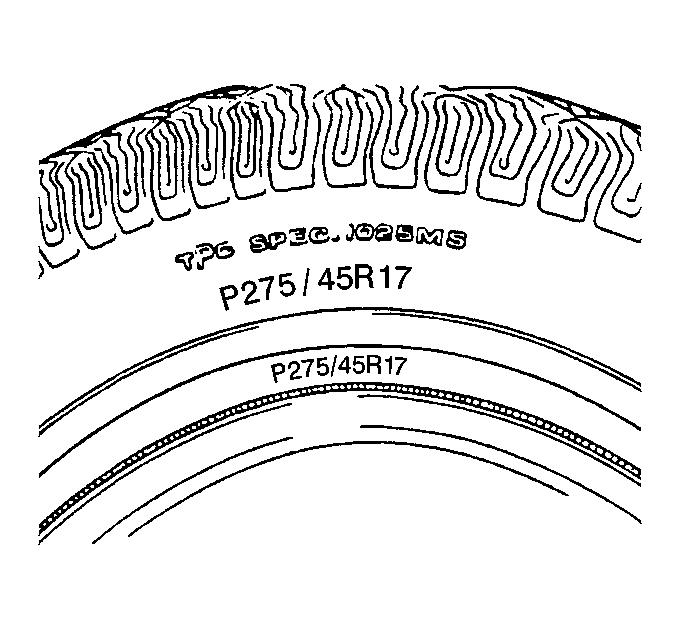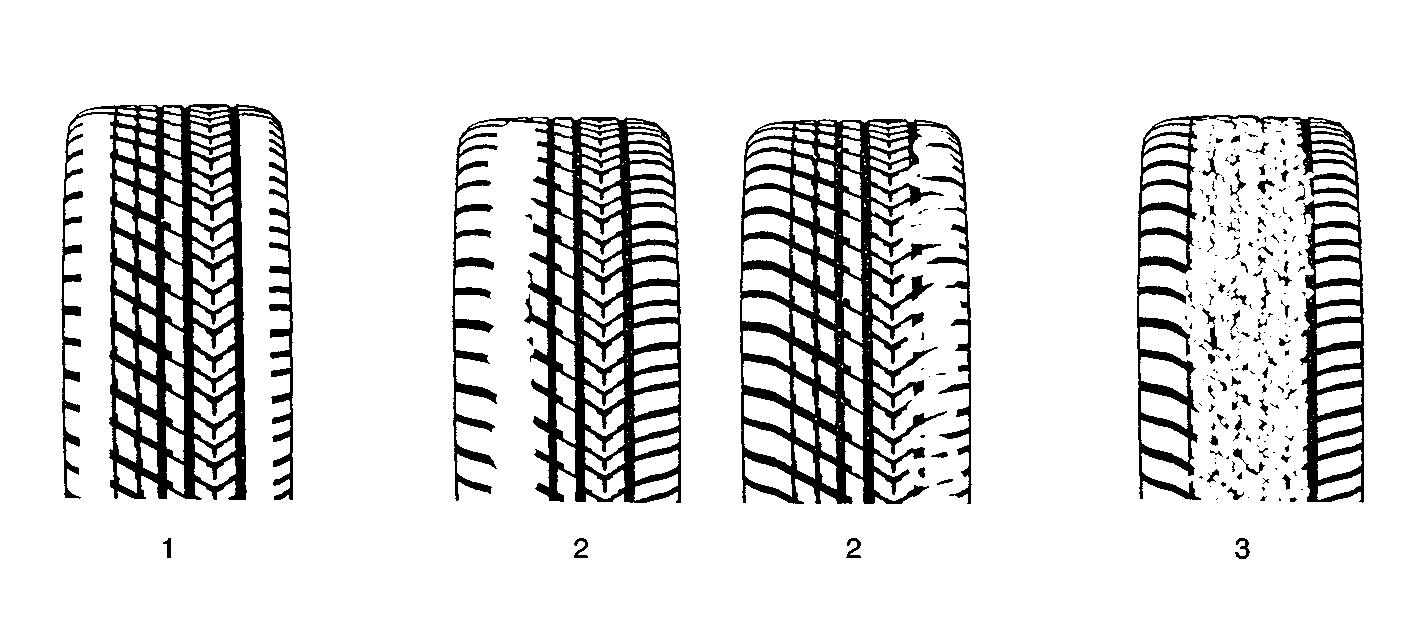The tires on all new GM
models have a tire performance criteria (TPC) rating number molded on the
sidewall. The TPC rating will appear as a four-digit number preceded by TPC
SPEC on the tire wall near the tire size. A replacement tire should have
the same TPC rating.


